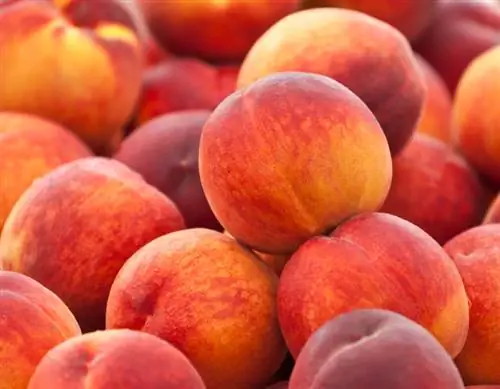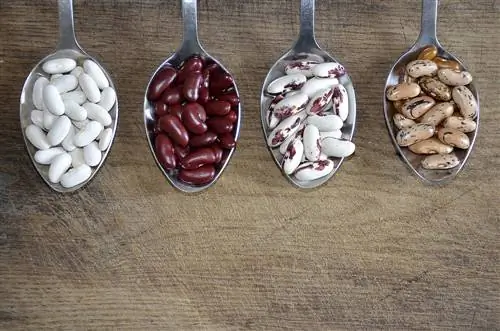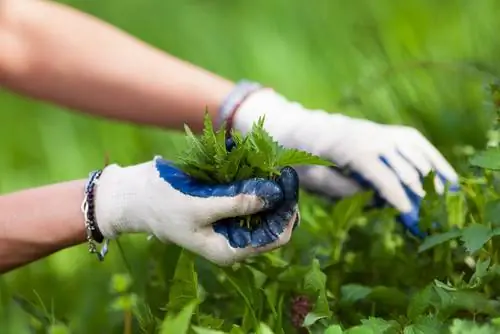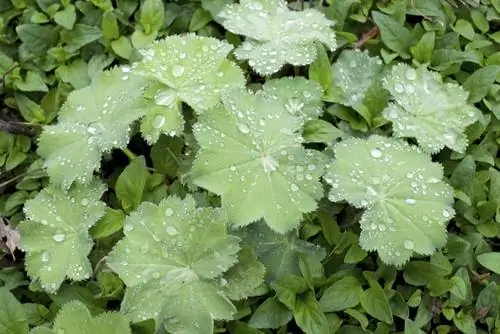- Author admin [email protected].
- Public 2023-12-16 16:46.
- Last modified 2025-01-23 11:19.
Not all peaches are the same: The approximately 3,000 different varieties of the sweet “fruit of immortality” worldwide differ in appearance, taste and other properties. There are also varieties such as nectarines - which are basically just hairless peaches - as well as the so-called wild peaches.
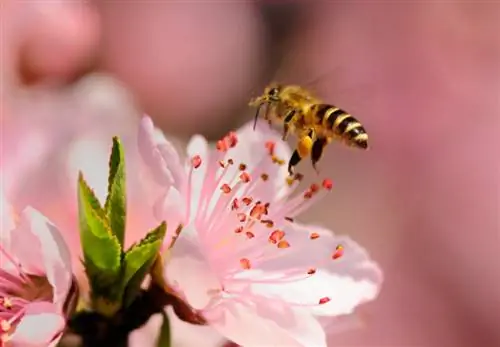
What are wild peaches and what types are there?
Wild peaches, also known as flat peaches or plate peaches, are not actually wild fruits but are grown in orchards. They are characterized by their flat appearance, fine aroma and high juiciness. Red wild peach from southern Russia and white Chinese peach are some other rare peach varieties.
Wild peaches come from cultivated cultivation
So-called “wild peaches” have been available in supermarkets for several years, but they are anything but wild. The fruits look like flattened balls, which is why they are also called flat or plate peaches. Other variety names include: Mountain peach or Saturn peach (because of the Saturn ring). Contrary to what the name “wild peach” suggests, these flat versions of the peach are not picked in nature, but are grown conventionally on orchards.
Flat peaches have a very delicate aroma
However, the flat peaches far surpass their spherical cousins in terms of taste and juiciness: flat peaches have a wonderfully delicate aroma, are very sweet and very juicy - but only when they are actually ripe on the tree. Naturally, ripened peaches will never be able to achieve the sweetness and juiciness of a fully ripe peach. The plated peaches are ideal for eating raw, but also for preserving or for special dishes.
Growing flat peaches in the garden
You can also buy young flat peach trees from fruit shops called “plate peach” or “Saturn peach” that you can plant in your own garden. These peaches have the same requirements as their regular cousins, but are particularly sensitive to the common peach curl disease. Flat peaches therefore always need to be sprayed.
More wild rarities
Instead of the supposedly wild plate peaches, you can also plant other wild peach rarities that not everyone actually has. These include, among others,
- Red wild peach (from southern Russia)
- White Chinese peach (wild peach from Asia)
The Red Wild Peach
This rarity comes from the south of Russia and develops medium-sized, yellow to red fruits. The bush, up to three meters high, is very robust, frost-hardy and also insensitive to curl disease.
The white Chinese peach
Strictly speaking, this late-ripening variety is also not a wild peach, as it is very often and popularly cultivated throughout Asia. The fruits are only slightly red, but very aromatic.
Tips & Tricks
Wild peaches, i.e. H. The flat peach should only be grown in particularly suitable locations and, above all, treated regularly against curl disease and other fungal diseases.


